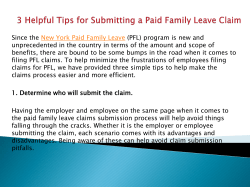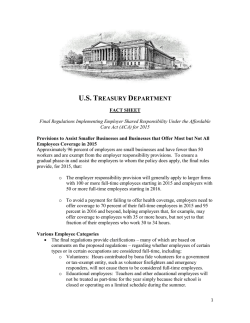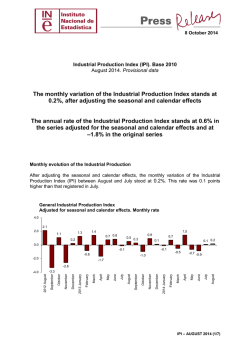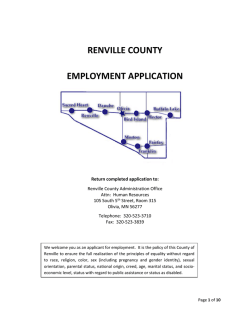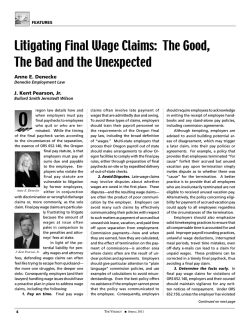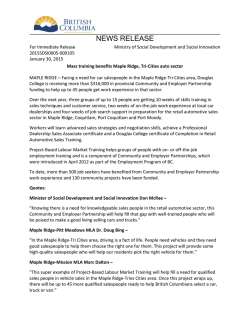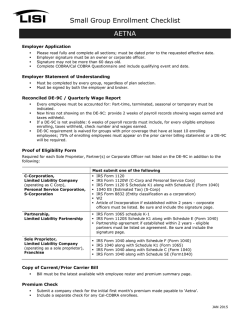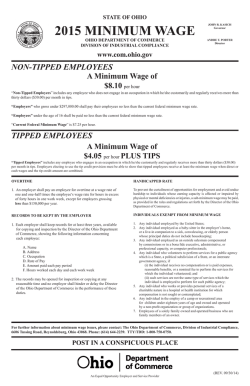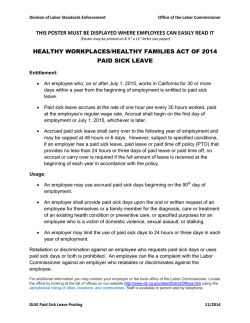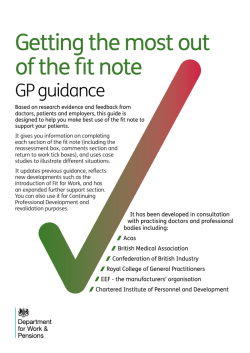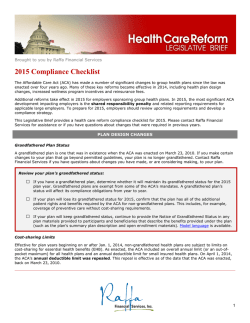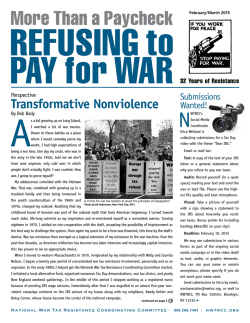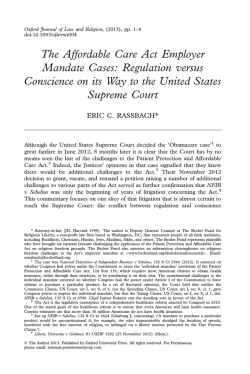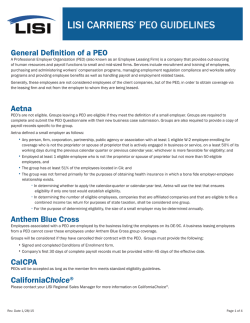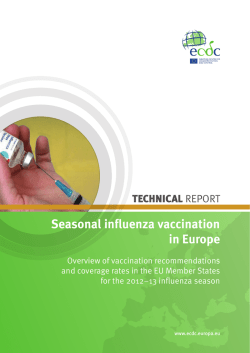
Seasonal Employees in 2015 - Health Care Reform Updates
DATE: TO: FROM: RE: January 27, 2015 Our Valued Client Partners & Friends HIB Account Team Seasonal Employees in 2015 We are pleased to bring you our Health Care Reform Alert: Seasonal Employees in 2015, addressing the best practices for large employers with seasonal employees in 2015 and beyond. SEASONAL EMPLOYEES IN 2015 The Affordable Care Act mentions ‘seasonal employees’ in only one context: determining an employers’ ‘size’ for purposes of defining their status as an ‘Applicable Large Employer’ (ALE) within the meaning of the Section 4980H penalties which is commonly referred to as the “Employer Mandate”. Since the ACA’s birth in 2010, the Agencies charged with enforcement of the complex law have chimed in with regulatory guidance for employers to rely on in developing their eligibility policies in their efforts to comply with the currently applicable mandate. According to the IRS, seasonal employees may be treated as variable hour employees for purposes of determining eligibility for employer-sponsored health plans. Seasonal employees, within the spirit of the law, are employees who work in industries that traditionally rely on workers to perform services on a seasonal basis. In Notice 2012-58, the IRS defines ‘seasonal employees’ as follows: § 4980H(c)(2)(B)(ii) provides that, for this purpose, seasonal worker means a worker who performs labor or services on a seasonal basis, as defined by the Secretary of Labor, including (but not limited to) workers covered by 29 CFR 500.20(s)(1) and retail workers employed exclusively during holiday seasons. The practical solution for employers with a heavy supply of seasonal workers is the same measurement and stability tracking that the Agencies have instructed us on applying to variable hour employees. Example (IRS Notice 2012-58) Facts: Employer D offers health plan coverage only to fulltime employees (and their dependents). Employer D uses a 12-month initial measurement period for new variable hour employees and seasonal employees that begins on their hire date and applies an administrative period from the end of the initial measurement period through the end of the first calendar month beginning after the end of the initial measurement period. California Offices: Los Angeles Menlo Park Petaluma San Francisco Santa Ana Walnut Creek Chesterfield, Missouri New York, New York Portland, Oregon Phone Number 800.234.6787 Fax 415.348.0417 www.heffins.com California License No 0564249 Example: Employer D hires Employee S, a ski instructor, on November 15, 2014 with an anticipated season during which Employee S will work running through March 15, 2015. Employer D determines that Employee S is a seasonal employee based upon a reasonable good faith interpretation of that term. Employee S’s initial measurement period runs from November 15, 2014, through November 14, 2015. Employee S works 60 hours per week from November 15, 2014 through March 15, 2015, but is not reasonably expected to average 30 hours per week for the 12-month initial measurement period. Conclusion: Employer D does not treat Employee S as a full-time employee, and does not offer Employee S coverage. In addition, under the final regulations, if an employee has a break in service that lasts for 13 weeks, they may be treated as a new hire upon return. For example, a seasonal employee may work for an employer for 8 months (from March 2014 through October 2014). The employee may leave, and return 4 months later in March 2015. Since there was a 4 month break in service, of more than 13 weeks, the employee can be treated as a new hire and placed into the initial measurement period upon return. IRS Circular 230 disclosure: To ensure compliance with requirements imposed by the IRS, we inform you that any tax advice contained in this communication, unless expressly stated otherwise, was not intended or written to be used, and cannot be used, for the purpose of (i) avoiding tax-related penalties under the Internal Revenue Code or (ii) promoting, marketing or recommending to another party any tax-related matter(s) addressed herein. Heffernan Employee Benefits Legislative Updates and Employer HR Alerts are published as an information source for our clients and colleagues. It is general in its nature and is not intended to be and should not be used as a substitute for specific legal advice. California Offices: Los Angeles Menlo Park Petaluma San Francisco Santa Ana Walnut Creek Chesterfield, Missouri New York, New York Portland, Oregon Phone Number 800.234.6787 Fax 415.348.0417 www.heffins.com California License No 0564249
© Copyright 2026
